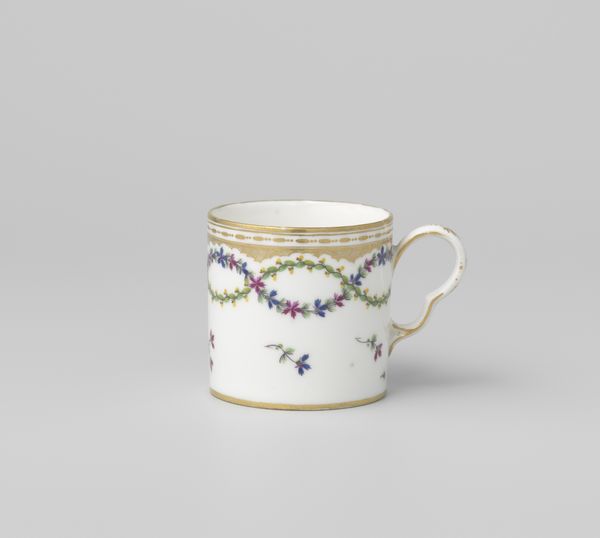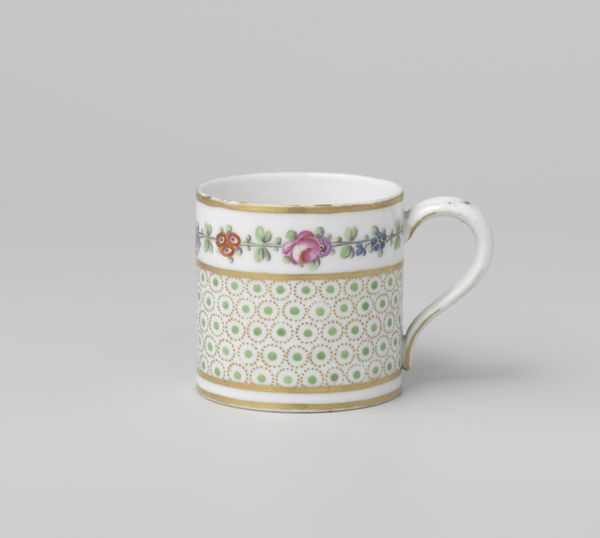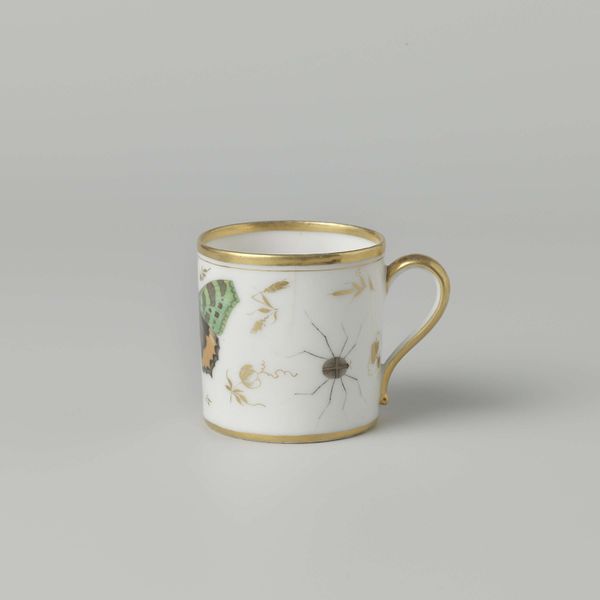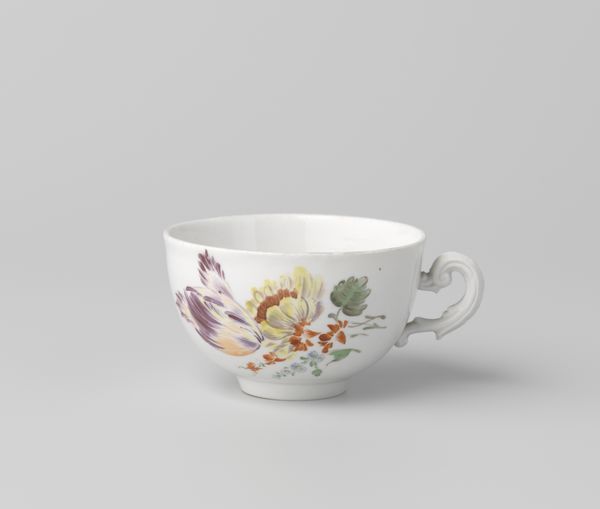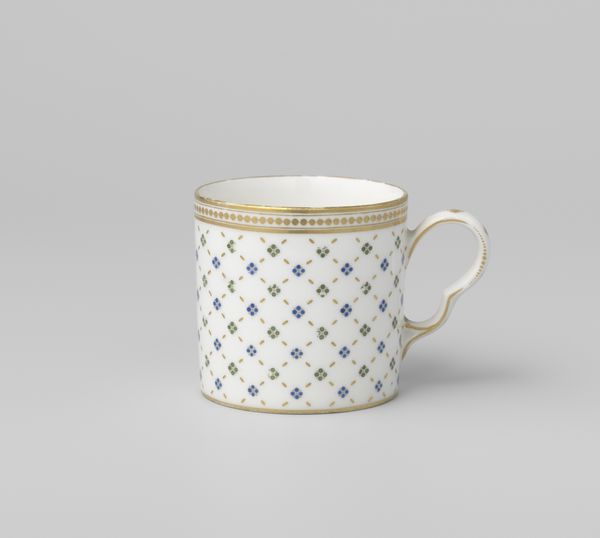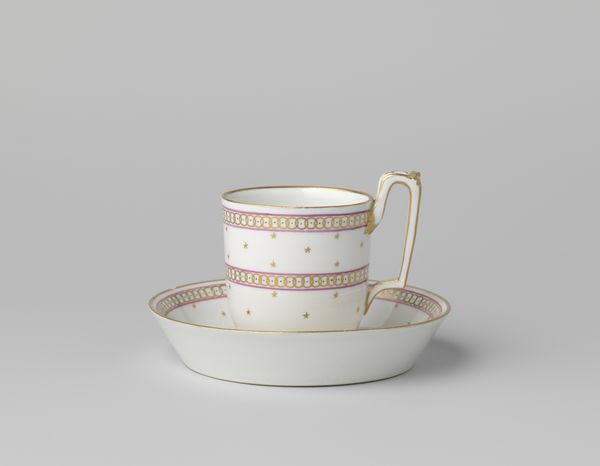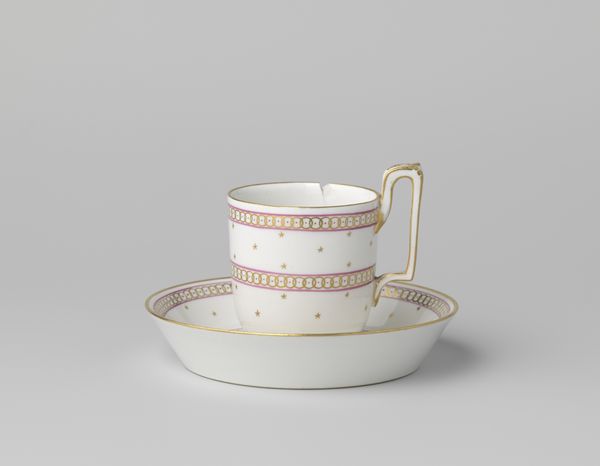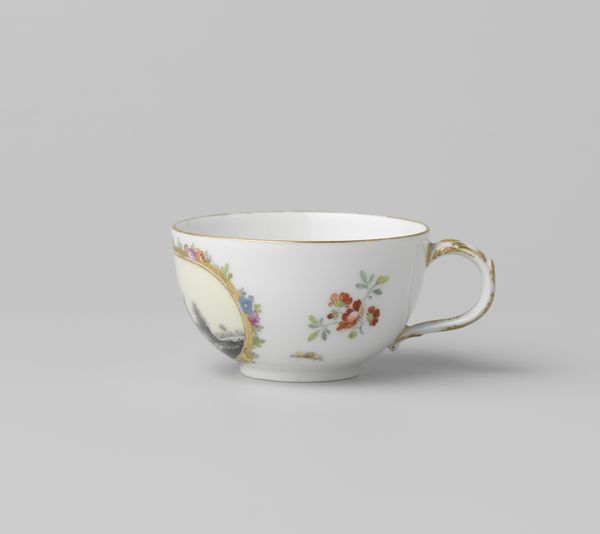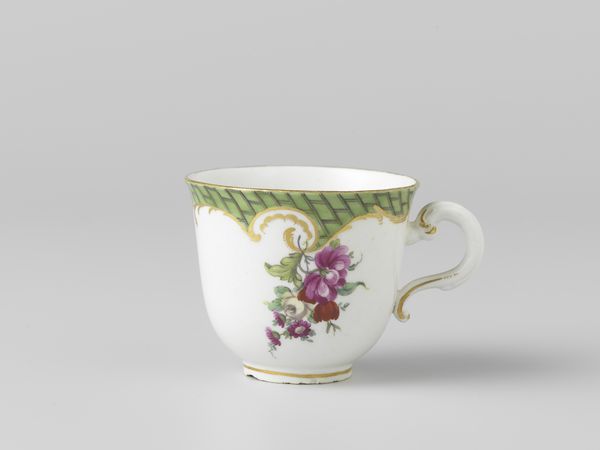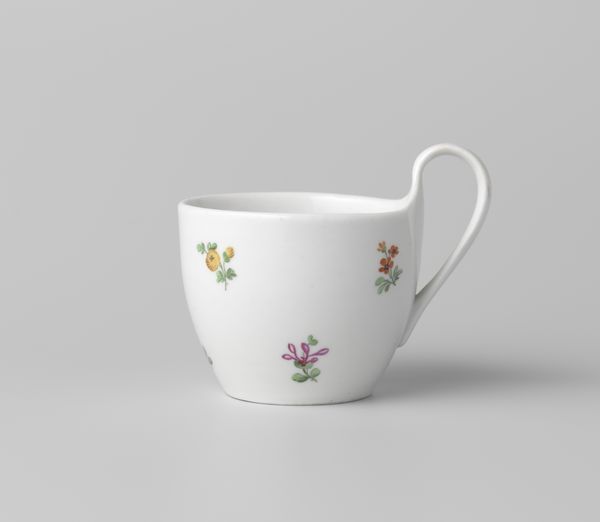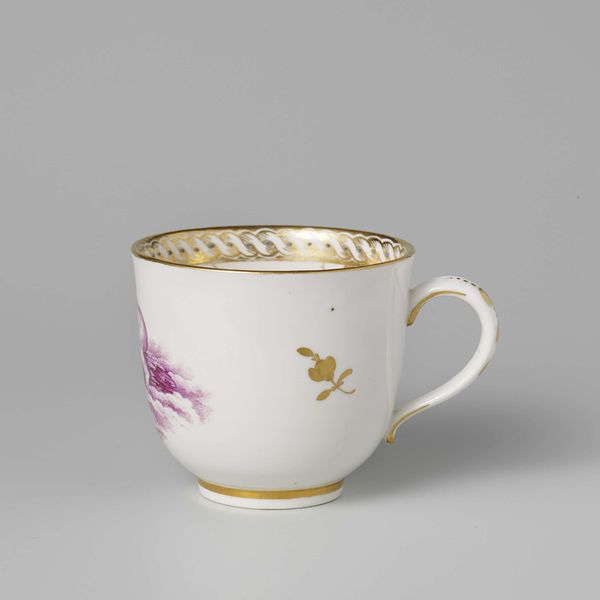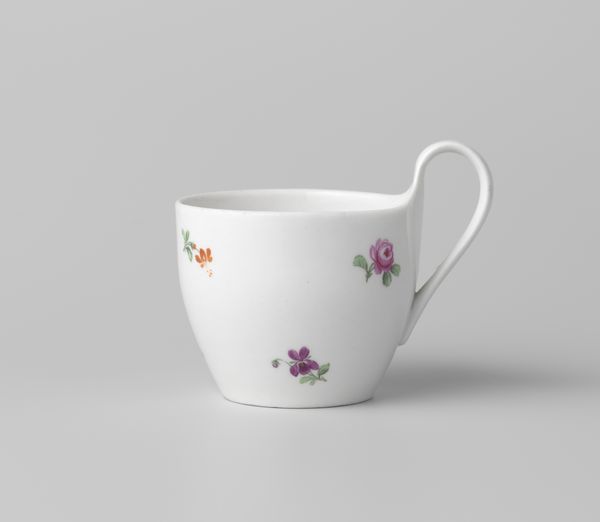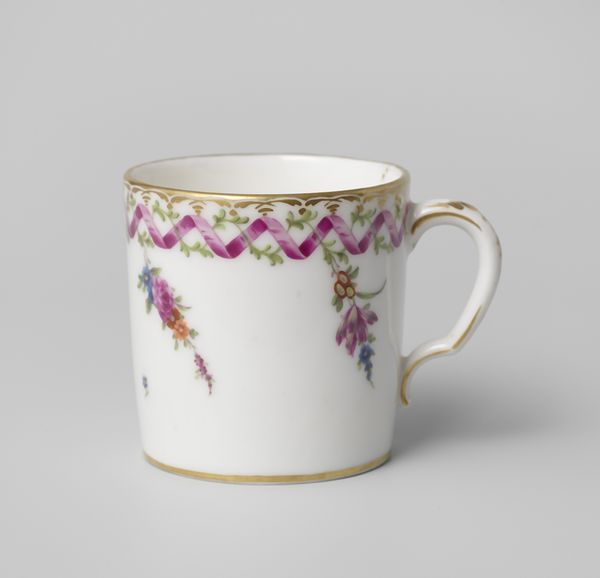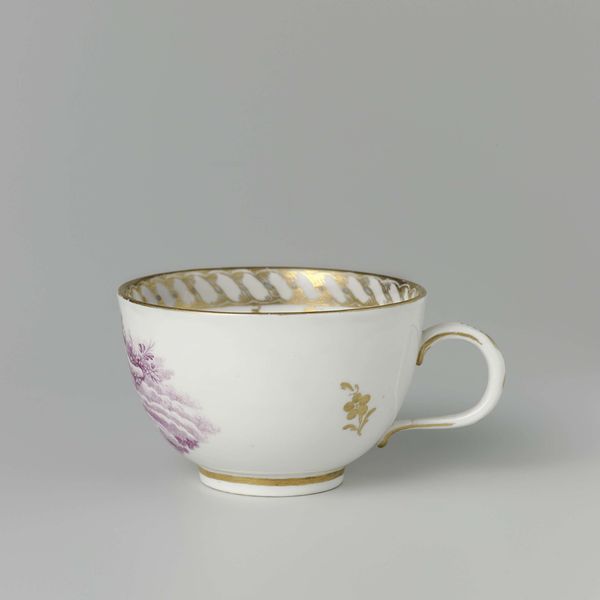
Dimensions: height 6.5 cm, diameter 6.5 cm, width 8.8 cm
Copyright: Rijks Museum: Open Domain
Curator: Take a moment to admire this delightful porcelain cup, created sometime between 1775 and 1799. The piece resides here at the Rijksmuseum. It is adorned with floral scrolls, stars, and dots. What are your first thoughts? Editor: It's… surprisingly cheerful! There’s something very charming about the floral band clashing with the almost mathematical pattern of the stars and dots below. It has such a sense of joyfulness! Curator: Considering its history, such cheer might seem an intentional act of defiance. Late 18th-century Europe was brewing with political tension; revolutions were imminent. The Rococo style, which this cup exemplifies, with its whimsical designs, served as an aesthetic contrast to increasingly austere times. The gilded accents, too, speaks to the role of elite commissions of art objects and potentially the patronage system in play during this era. Editor: Exactly. I see this cup not just as a simple drinking vessel, but as a potent symbol of class. The dainty floral pattern combined with golden embellishments—aren't they really an intentional flaunting of luxury? Imagine the hand that once held this cup; that simple, everyday motion symbolizes immense power dynamics and social inequality. Curator: It is a poignant reflection on consumption and identity within specific class and social settings of the time. These wares were, after all, objects that affirmed belonging. These are fascinating notions when observing this beautiful cup. Editor: Indeed. Objects like these weren’t made in isolation; they were embedded within layers of meaning. And by bringing a contemporary lens to them, like the study of class struggle, we can see their significance in relation to societal evolution. Curator: Precisely, and that's why considering all contexts is so important. When did it emerge and under what socio-economic conditions, who consumed them and how are their aesthetics and symbols politically charged. Editor: Exactly! This little cup is much more than decoration. It’s a microcosm of history, culture, and power, reminding us that everyday objects can tell extraordinary stories about the world. Curator: Yes. Considering all the circumstances, it prompts us to challenge conventional views of what the past really meant.
Comments
No comments
Be the first to comment and join the conversation on the ultimate creative platform.
